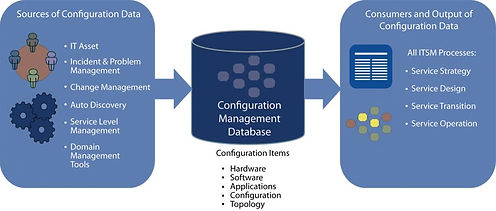Configuration Management Database (CMDB)
A configuration management database (CMDB) is a repository that acts as a data warehouse for information technology (IT) organizations. Its contents are intended to hold a collection of IT assets that are commonly referred to as configuration items (CI), as well as descriptive relationships between such assets. When populated, the repository becomes a means of understanding how critical assets such as information systems are composed, what their upstream sources or dependencies are, and what their downstream targets are.
Depending on the CI type or category, there are many attributes that might be captured:
- CI Unique Identifier or Identification Code
- CI Name or Label (often, both, long names and short names)
- CI Abbreviations or Acronyms
- CI Description
- CI Ownership (organizations and people)
- CI Importance
There can be many more, depending on the CI types. In some cases, there may be hundreds of attributes.
Because attributes are defined by metadata, CMDBs also contain metadata, and thus the concept overlaps with that of a metadata repository, which is also used to more effectively run IT organizations. Configuration management addresses how the data is to be kept up to date, which has historically been a weakness of metadata repositories.
